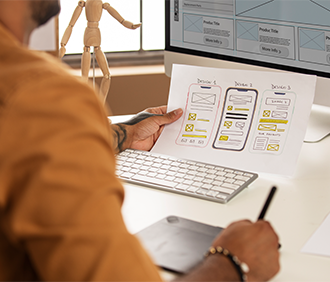Blog details
 16 apr
16 apr
UI/UX Design Trends in 2025: The Future of Digital Experiences
As technology rapidly advances, UI/UX design is evolving to create more intuitive, immersive, and user-centric digital experiences. In 2025, personalization is at the core of UI/UX, with artificial intelligence (AI) and machine learning playing a major role. Websites and applications now analyze user behavior in real-time, adapting content, layouts, and interactions to provide a highly tailored experience. AI-driven personalization ensures that users receive relevant information, recommendations, and features based on their preferences, making digital interactions more seamless and engaging.
Another major shift in UI/UX design is the rise of voice and gesture-based interfaces. With the increasing use of smart devices and AR/VR technology, users are moving beyond traditional touchscreen interactions. Voice commands, gesture recognition, and even eye-tracking are becoming more common, enabling hands-free navigation and more natural engagement with digital products. This shift is particularly beneficial in industries like healthcare, automotive, and smart home technology, where touchless interactions enhance efficiency and accessibility.
In terms of design aesthetics, minimalism continues to dominate, but with a modern twist—neumorphism. This design approach blends soft shadows and 3D elements to create visually appealing, tactile interfaces. Alongside this, dark mode and high-contrast UI are becoming essential, improving readability, reducing eye strain, and making digital experiences more comfortable, especially for users spending extended periods on screens.